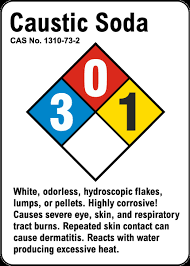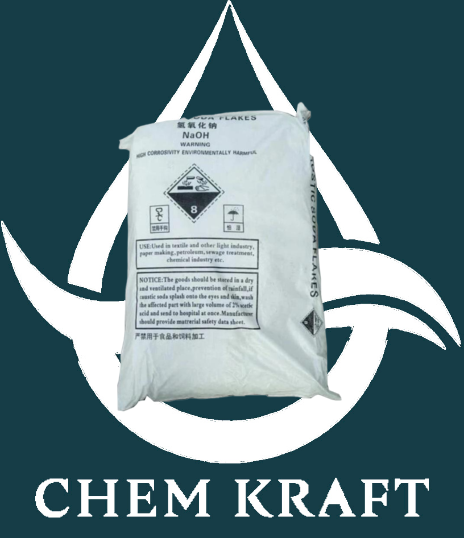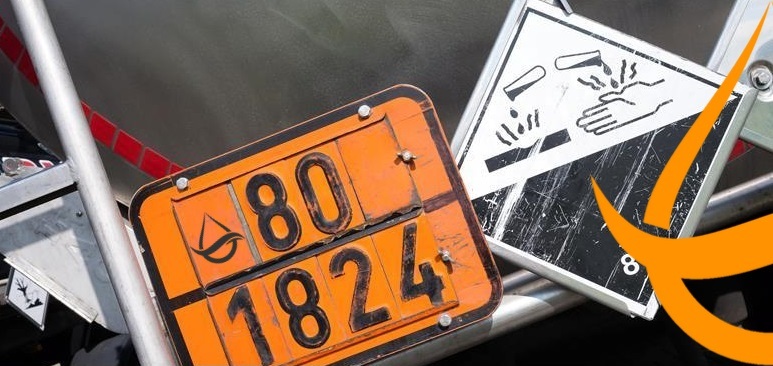Introduction
Caustic soda, also known as sodium hydroxide, is a highly corrosive substance used in various industrial applications. Due to its hazardous nature, it is crucial to ensure the safe handling, storage, and transportation of caustic soda packages to protect both human health and the environment.
International regulations play a vital role in establishing standards and guidelines for the packaging and labeling of caustic soda to mitigate risks and ensure compliance across borders. This article provides a comprehensive overview of the international regulations governing caustic soda packaging, exploring global standards, labeling requirements, packaging materials, handling practices, compliance procedures, and emerging developments in the field. Understanding and adhering to these regulations is essential for industries involved in the production, distribution, and use of caustic soda to maintain safety and regulatory compliance.
Introduction to Caustic Soda Packaging Regulations
Definition and Overview of Caustic Soda
Caustic soda, also known as sodium hydroxide, is a highly corrosive and versatile chemical compound. It is used in a wide range of industrial processes, including manufacturing textiles, paper, and cleaning agents. Due to its hazardous nature, proper packaging is crucial to ensure the safe handling, transportation, and storage of caustic soda.
Importance of Packaging Regulations
Packaging regulations for caustic soda serve as a means to protect human health, safety, and the environment. These regulations establish standards and guidelines that govern the packaging materials, design, labeling, and transportation of caustic soda. By complying with these regulations, manufacturers and distributors can minimize the risk of accidents, spills, and exposure to caustic soda, both for workers and the general public.
Global Standards and Guidelines for Caustic Soda Packaging
Regulatory Bodies and Organizations
Several regulatory bodies and organizations play a crucial role in developing and enforcing caustic soda packaging regulations. These include international organizations such as the United Nations (UN), which sets standards for the safe transportation of dangerous goods, and the International Maritime Organization (IMO), which regulates the shipping industry. Additionally, regional bodies and national agencies also contribute to the development of packaging standards.
International Standards for Caustic Soda Packaging
Various international standards have been established to ensure the safe packaging of caustic soda. These standards encompass factors such as the type and quality of packaging materials, structural integrity, and compatibility with caustic soda. Examples of widely recognized international standards include those set by the International Organization for Standardization (ISO) and the European Committee for Standardization (CEN).

International Labeling Requirements for Caustic Soda Packages
Mandatory Labeling Information
Labeling requirements for caustic soda packages aim to provide essential information for safe handling and transportation. Mandatory labeling information typically includes product identification, hazard warnings, precautionary statements, first aid instructions, and contact details of the manufacturer or distributor. It is important for packaging to have clear and prominently displayed labels to ensure that users are aware of the potential risks involved.
Hazard Communication Symbols and Pictograms
To enhance understanding and facilitate communication, internationally recognized hazard symbols and pictograms are used on caustic soda packaging. These symbols, such as the skull and crossbones for acute toxicity or the flame for flammability, function as visual reminders of the associated hazards. Pictograms serve as a quick reference for the potential risks and precautions associated with caustic soda.
Packaging Materials and Design Specifications for Caustic Soda
Suitable Packaging Materials
The choice of packaging materials for caustic soda must be carefully considered to ensure compatibility and prevent leakage or deterioration. Commonly used materials include high-density polyethylene (HDPE) containers, steel drums, and composite materials. These materials provide resistance to the corrosive properties of caustic soda and offer adequate strength and durability.
Strength and Durability Requirements
Caustic soda packages must meet specified strength and durability requirements to withstand the handling and transportation process. These requirements include factors such as stackability, resistance to puncture, and leak-proof seals. Packaging design must also consider the weight and volume of caustic soda, ensuring that containers are appropriately sized and reinforced to prevent damage or accidents during storage or transit.
Handling, Storage, and Transportation Regulations for Caustic Soda Packages
Safe Handling Practices
When it comes to handling caustic soda packages, safety should be your top priority. This highly corrosive substance can cause serious burns if mishandled. Always wear appropriate protective equipment, like gloves and goggles, when handling caustic soda. It’s also a good idea to have a spill kit on hand in case of any accidents. Remember, this stuff is not your average lemonade, so take extra precautions!
Storage and Warehousing Guidelines
Storing caustic soda packages correctly is crucial to prevent accidents and maintain their quality. Keep them in a cool, dry place away from direct sunlight and other incompatible materials. Make sure the containers are tightly closed and properly labeled. You don’t want anyone mistaking caustic soda for their morning coffee! Also, don’t stack them too high, unless you want a towering Jenga game of dangerous chemicals.

Transportation Requirements
Transporting caustic soda packages requires careful consideration. They should be securely packaged and labeled according to international regulations. When loading them onto a vehicle, make sure they are positioned to prevent damage or leakage during transit. And for the love of all things non-corrosive, don’t mix them with other substances that could react violently! Nobody needs a chemistry experiment on wheels.
Compliance and Enforcement of International Regulations for Caustic Soda Packaging
Regulatory Compliance Procedures
International regulations for caustic soda packaging are no joke. Companies must comply with specific standards and guidelines to ensure the safety of both workers and the environment. Regular checks and inspections are conducted to ensure that these procedures are being followed. If you’re thinking of skirting the rules, just remember that caustic soda doesn’t care about your rebellious spirit—it’ll burn right through it!
Audit and Inspection Protocols
To make sure everyone is playing by the rules, audits and inspections are carried out on a regular basis. Inspectors will go through your packaging and labeling processes with a fine-toothed comb, checking for any deviations or non-compliance. So, it’s a good idea to stay on the right side of the law and have your caustic soda packaging game on point. Nobody wants to be caught off-guard by an inspector who’s less amused than I am.
Challenges and Future Developments in Caustic Soda Packaging Standards
Emerging Technologies and Innovations
As technology advances, so do the possibilities for improving caustic soda packaging standards. Research and development are continuously working to find safer and more efficient ways to handle and transport these packages. So, don’t be surprised if one day caustic soda comes in a sleek, space-age container that practically pours itself. Okay, maybe not that advanced, but you get the idea.
Environmental Considerations and Sustainability
Sustainability is a hot topic these days, and caustic soda packaging is no exception. The industry is exploring ways to reduce waste, optimize resources, and minimize the impact on the environment. Imagine a world where caustic soda packages are not only safe but also eco-friendly. It might not seem as glamorous as saving baby sea turtles, but every little step towards sustainability counts.
Importance of International Regulations for Caustic Soda Packages
In conclusion, international regulations for caustic soda packaging are vital for ensuring the safety of both people and the environment. By following these guidelines for handling, storage, and transportation, we can minimize accidents and promote responsible practices. So, let’s raise a glass (of non-caustic soda) to these regulations and toast to a world where caustic soda stays where it belongs—securely packaged and safely handled. Cheers!
Conclusion
In conclusion, international regulations for caustic soda packaging are of utmost importance in ensuring the safe handling, storage, and transportation of this hazardous substance. These regulations establish standards and guidelines for packaging materials, design, labeling requirements, and compliance procedures, all aimed at mitigating risks and protecting human health and the environment. Adherence to these regulations is not only a legal requirement but also a responsible practice for industries involved in dealing with caustic soda. By staying updated with emerging developments and embracing sustainable packaging solutions, companies can contribute to a safer and more environmentally friendly approach to handling caustic soda. Through a collective commitment to international regulations, we can safeguard the well-being of workers, communities, and ecosystems while maintaining the efficiency and effectiveness of caustic soda applications.
FAQ
What are the key international regulations governing caustic soda packaging
Answer
The key international regulations governing caustic soda packaging include standards and guidelines set by regulatory bodies such as the United Nations (UN), International Maritime Organization (IMO), and various national regulatory agencies. These regulations cover aspects such as packaging materials, design specifications, labeling requirements, handling practices, storage guidelines, and transportation regulations.
Why are international regulations for caustic soda packaging important
Answer
International regulations for caustic soda packaging are crucial for ensuring the safe handling, storage, and transportation of this highly corrosive substance. These regulations help mitigate risks associated with caustic soda, protect human health, and prevent environmental contamination. By complying with these regulations, industries can maintain high safety standards, reduce accidents, and minimize the negative impact on workers, communities, and ecosystems.
How can companies ensure compliance with international regulations for caustic soda packaging
Answer
To ensure compliance with international regulations for caustic soda packaging, companies should stay updated with the latest standards and guidelines set by regulatory bodies. They should carefully select suitable packaging materials, design packages that meet strength and durability requirements, and adhere to mandatory labeling information and hazard communication symbols. It is also essential to establish proper handling protocols, provide training to employees, and implement robust storage and transportation practices. Regular audits and inspections can help identify areas of non-compliance and facilitate corrective actions.
Are there any emerging developments in caustic soda packaging standards
Answer
Yes, there are emerging developments in caustic soda packaging standards. These developments focus on incorporating innovative technologies and sustainable practices. Efforts are being made to explore eco-friendly packaging materials, improve packaging designs for enhanced safety and efficiency, and reduce the environmental footprint of caustic soda packaging. The aim is to promote the use of more sustainable alternatives while ensuring compliance with international regulations and maintaining the integrity of caustic soda applications.










